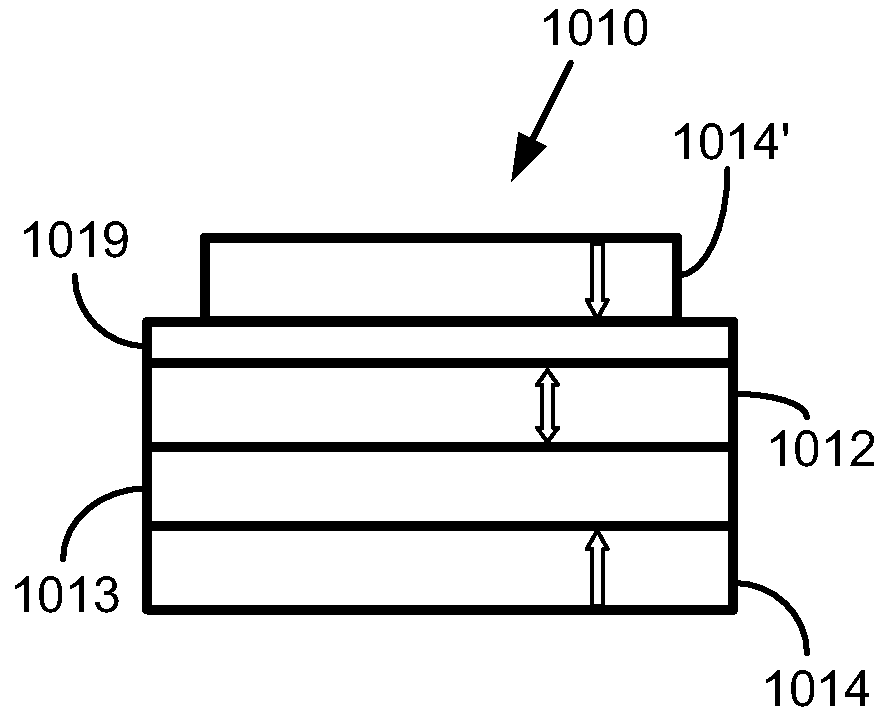ST-RAM Cells with Perpendicular Anisotropy
a technology of perpendicular anisotropy and ram cells, which is applied in the direction of galvano-magnetic material selection, digital storage, instruments, etc., can solve the problems of limiting the size of the cmos transistor, limiting the density of the memory array, and how low the switching current can be for adequate thermal stability
- Summary
- Abstract
- Description
- Claims
- Application Information
AI Technical Summary
Benefits of technology
Problems solved by technology
Method used
Image
Examples
Embodiment Construction
[0019]The present disclosure is directed to various designs of magnetic tunnel junction memory cells having magnetic anisotropies that result in the magnetization orientation of the associated ferromagnetic layers to be aligned perpendicular to the wafer plane, or “out-of-plane”. The memory cells have various structural elements that reduce the switching current needed to switch the data bit state of the cell while maintaining adequate thermal stability. The memory cells can be patterned on the wafer at a high areal density. Further, the memory cells are more tolerant to process variations.
[0020]In the following description, reference is made to the accompanying set of drawings that form a part hereof and in which are shown by way of illustration several specific embodiments. It is to be understood that other embodiments are contemplated and may be made without departing from the scope or spirit of the present disclosure. The following detailed description, therefore, is not to be t...
PUM
 Login to View More
Login to View More Abstract
Description
Claims
Application Information
 Login to View More
Login to View More - R&D
- Intellectual Property
- Life Sciences
- Materials
- Tech Scout
- Unparalleled Data Quality
- Higher Quality Content
- 60% Fewer Hallucinations
Browse by: Latest US Patents, China's latest patents, Technical Efficacy Thesaurus, Application Domain, Technology Topic, Popular Technical Reports.
© 2025 PatSnap. All rights reserved.Legal|Privacy policy|Modern Slavery Act Transparency Statement|Sitemap|About US| Contact US: help@patsnap.com



